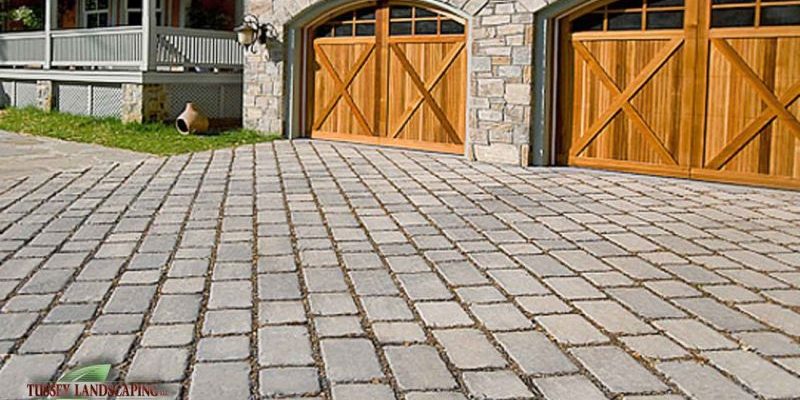
We often get questions about this relatively new paving style, so in this article we’ll answer some common questions about permeable pavers and discover a few advantages and best practices along the way.
What Are Permeable Pavers?
Permeable pavers fall under the broader industry category of permeable paving solutions. Permeable pavement is a surface designed to withstand pedestrian or vehicular use and produces no run-off water from rainstorms. In the industry of permeable paving, permeable pavers are quickly becoming the preferred method. We’ll find some of the reasons why, but first, what are permeable pavers?
Permeable pavers are an interlocking concrete paver system designed to allow rain to pass through the surface to the ground beneath without any drains or surface collection systems. This system is designed to work mainly in areas where high surface run-off and storm drain systems are a continued problem. But why permeable pavers? To understand the usefulness of a permeable paving system, we need to evaluate some of the issues created by our modern civilization.
Why Use Permeable Pavers?
Ancient civilizations have been paving streets in their towns for thousands of years. However, only in the last hundred years have impervious surfaces become commonplace in our lives. Before this, as rain fell, it was quickly absorbed into the ground it fell on, and only under heavy rainfall did run-off become a problem.
The first concrete highway in the United States broke ground in 1909. In the decades that followed, almost all the roads in the nation were paved, and parking lots and driveways soon followed. By the beginning of the 21st century, nearly 100% of our cities were covered in impermeable surfaces. From the roofs of our buildings to the parking lots and sidewalks, there was nowhere for the water to go. So, we created elaborate stormwater management systems. While these costly systems deal with most of the drainage issues, they do not address the cause of the problem itself.
Permeable paving is a cure for drainage issues. Permeable pavers offer a durable, beautiful way to create a solid surface capable of withstanding vehicle traffic, while still allowing rainwater to pass through it. While all you see on a completed surface is the face of the pavers, and the joints allowing water to escape between them, it is what’s underneath that makes this system work.
How Are Permeable Pavers Installed?
Like conventional paver systems, permeable pavers are installed on a bed of crushed stone. However, there are significant differences between them.
The most noticeable difference is the joint filling between the pavers. Conventional paver joints are filled with sand; usually, polymeric sand is used for durability. This sand does not allow proper infiltration of water through the joints, so it is not suitable for a permeable solution. Instead, fine gravel or stone is used. Industry specifications and paver types may change the exact stone, but usually, a washed #9 stone or a #8 gravel is used to fill the joints. This still functions correctly as a joint filler, giving structural integrity to the interlock system, while allowing water to pass down to the base.
All interlocking paver systems are built on a stone base system. This compacted stone layer is usually 6 to 10 inches deep and acts as a foundation for your pavers. Permeable pavers use the same design, with two changes.
Permeable pavers require a more compacted stone base, often 12 inches or deeper. Clean stone (with no millings or fines mixed in) is used for the base.
This clean stone has void space between it, allowing water to pass through the stone layer to the earth below.
If the area is prone to heavy rainfall or is in soil conditions that don’t allow natural percolation of rainwater, a water collection system can be built beneath the paver base layer. This hidden collection system can carry excess water to an underground reservoir or another waterway.
Permeable pavers offer a beautiful way to end unwanted runoff water problems and provide a functional, puddle-free space. From industrial parking lots to backyard patios and walkways, this paving innovation is changing the way we deal with water.
Contact us if you’d like to discuss how permeable pavers might improve your landscape.
